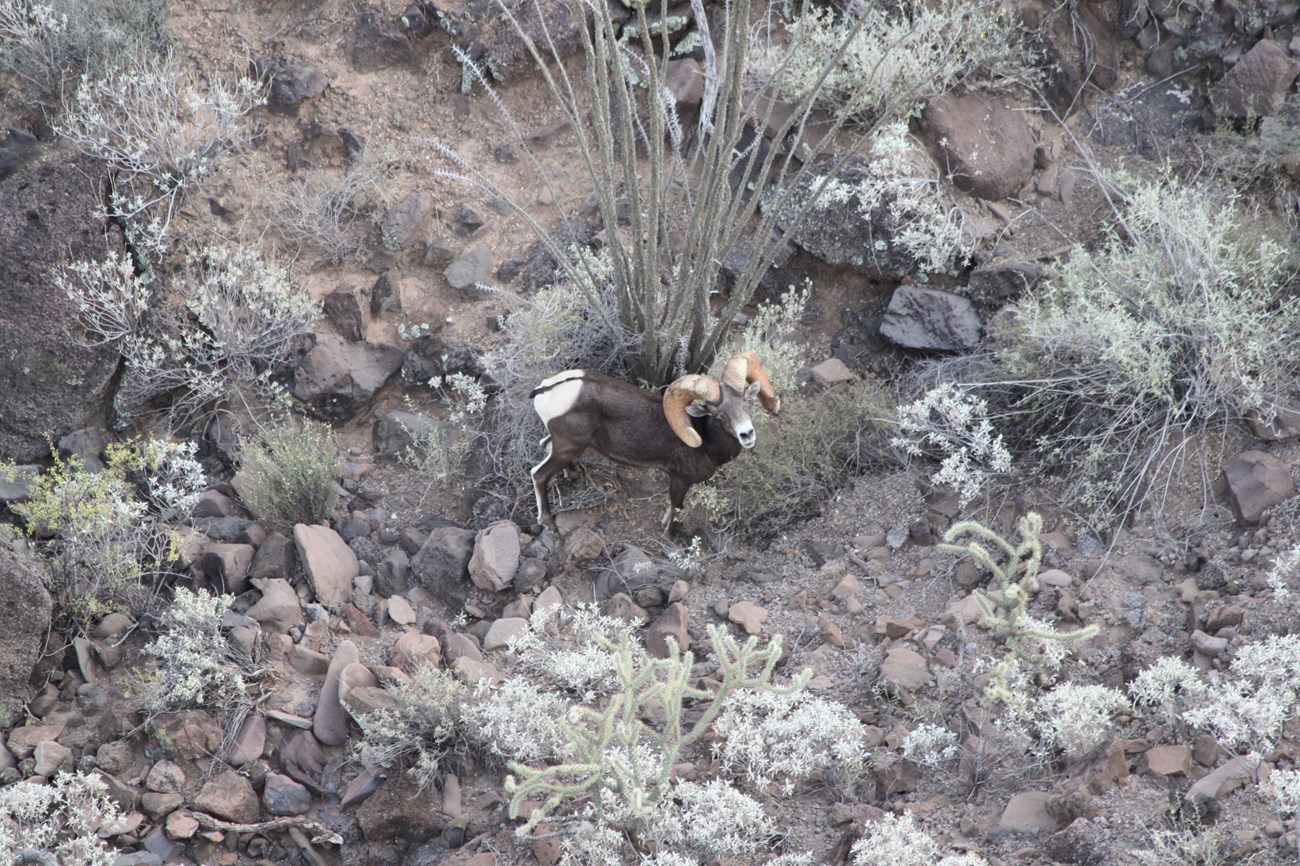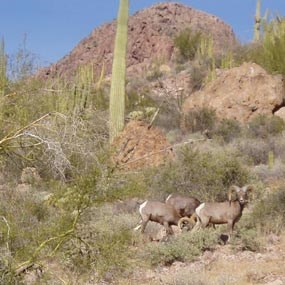
NPS photo 
NPS Photo Hard Heads and Harder ResolveMany people consider the Desert Bighorn sheep (ovis canadencis nelsoni or o.c.mexicana) to be an icon of the western deserts and canyons. There are several varieties of Bighorn sheep, including the Rocky Mountain and Sierra. All of them are muscular, solid animals, with legendary rock-climbing abilities. All bighorn rams have heavy curving horns, while the ewes have shorter, slender versions. These horns are not shed, are constructed of the same hard material as human fingernails. The Desert Bighorn is distinguished by its shorter, lighter colored fur to keep it cooler in the extreme heat of the day. They also perspire and pant to cool themselves during the hottest times. Bighorn have the ability to go for long periods without water, getting most of their moisture from the variety of plants that they eat. But during the hot summers, they must drink at least every few days, so Bighorn tend to stay close to water holes and springs. These majestic, beautiful creatures are reclusive and not often seen. Many desert animals, including the Bighorn sheep, are crepuscular, meaning they are active in the early morning and again in the evening. Count yourself fortunate to see one of these shy sheep of the Sonoran Desert. The Tohono O’odham, Mexican people, and other local cultures, have developed a fascinating and ancient relationship with the Desert Bighorn that is based on mutual respect and trust. For more on this, read Counting Sheep: 20 Ways of Seeing Desert Bighorn, edited by Gary Paul Nabhan. If you are interested in learning more about the Desert Bighorn, try delving into The Desert Bighorn: Its Life History, Ecology, and Management by Gale Monson and Lowell Sumner. More About Big Horn Sheep in Arizona |
Last updated: July 18, 2023
